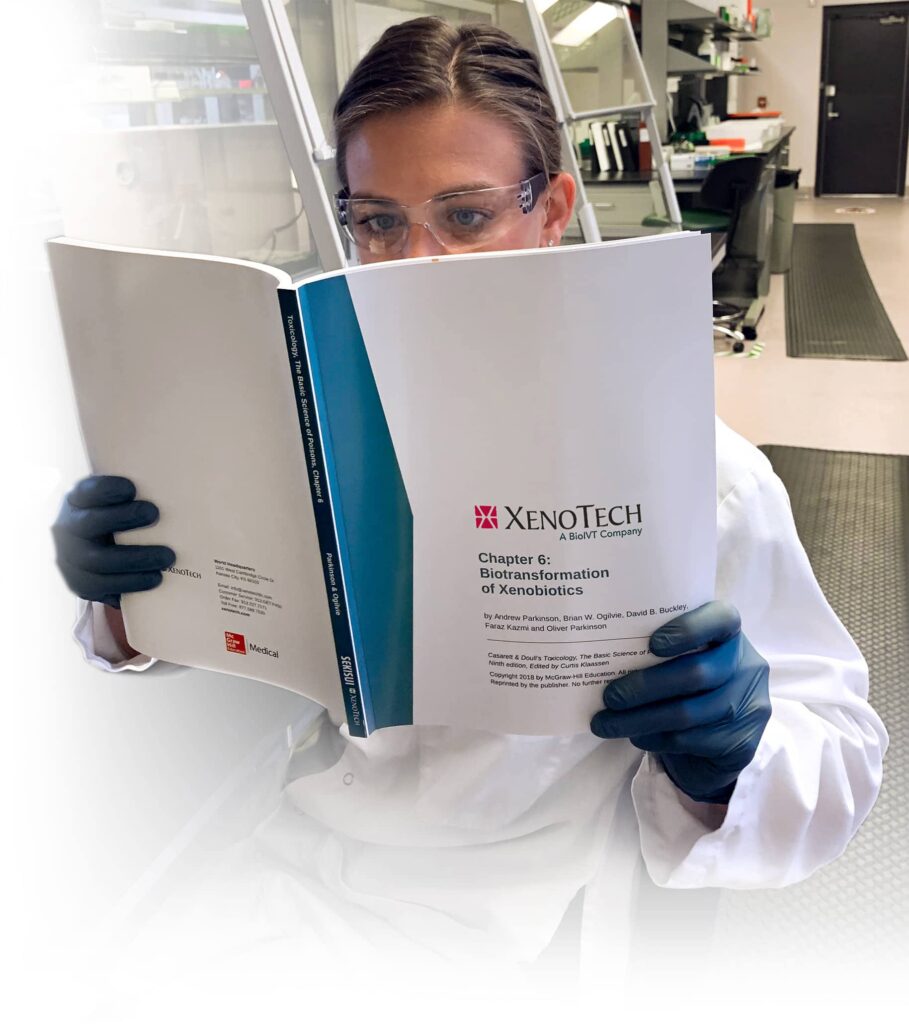
Hepatocytes as the preferred test system to evaluate oligonucleotide-CYP Interactions in vitro
Full Title
Hepatocytes as the preferred test system to evaluate oligonucleotide-CYP Interactions in vitro
Abstract
XenoTech previously examined the potential of oligonucleotides to inhibit cytochrome P450 (CYP) and reported that the phosphorothioate, but not phosphodiester, backboned molecules caused potent inhibition of CYP1A2 and CYP2C8 in human liver microsomes (HLM) but not in cryopreserved human hepatocytes (CHH) (Buckley et al., 2009). In this study we expanded upon our previous work to include direct, time- (TDI) and metabolism-dependent inhibition (MDI) of 7 CYP and 8 UGT enzymes in pooled HLM and pooled CHH. Briefly, oligonucleotides with either phosphodiester (oligo # 1 and #3) or phosphorothioate (oligo #2 and #4) backbones were evaluated in HLM to determine IC50 values without a pre-incubation (direct inhibition) or with a 30 min pre-incubation +/- NADPH (MDI and TDI evaluation, respectively). For UGTs, UDPGA was added to HLM and inhibition was assessed with a single concentration of oligos (30 mM). For CHH assays, MDI was assessed with 30 and 90 min pre-incubations, and 4-methylumbelliferone (4-MU) was used as a marker substrate of overall UGT activity. Incubations with CYP and UGT marker substrates were performed for 5–10 min and residual activity was assessed by LC-MS/MS analysis. The results indicated that the phosphodiester-backbone oligonucleotides had little to no inhibitory effect on CYP and UGT enzymes in HLM and CHH with the exception of oligo #2 in HLM for CYP2C19. Conversely, the phosphorothioate-backbone oligonucleotides caused direct inhibition of CYP and UGT enzymes. CYPs 1A2, 2B6, 2C8, and UGTs 1A1 and 2B17 were most highly inhibited by both phosphorothioate-backbone oligonucleotides. There was evidence of NADPH-independent inhibition of CYP2B6, CYP2C8, CYP2C19, CYP2C9, CYP2D6 and CYP3A4/5with oligo #2 and #4. In contrast to HLM, we observed little to no direct inhibition by any oligo in CHH (with the exception of oligo #2 with CYP2C19 and TDI by oligo #3 with CYP2C8), demonstrating test system-dependent outcomes. Overall this study indicates that hepatocytes, a test system physiologically more relevant than isolated microsomes, are the preferred model to evaluate oligonucleotide-CYP interactions in vitro.